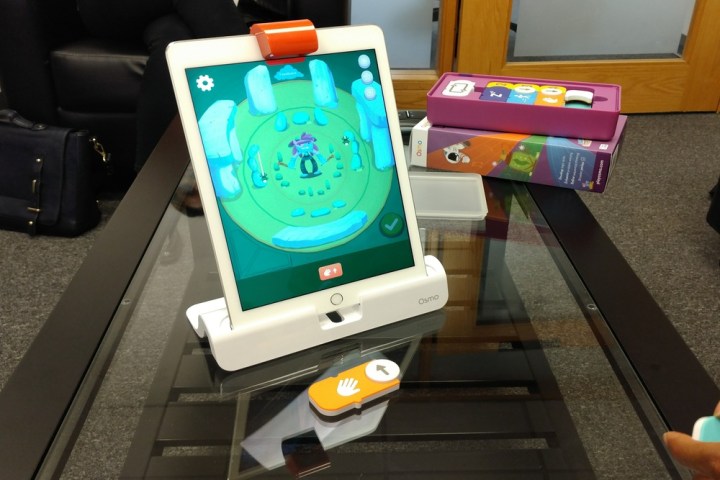
Pramod Sharma, the founder of Palo Alto, California-based startup Osmo, thinks it doesn’t think it has to be that way.
Osmo, the clever augmented reality platform that use the iPad’s front-facing camera to blend digital and real-world objects, was among the most innovative toys we saw two years ago. Ever since the tech made Time’s 25 Best Inventions of 2014, Osmo’s been chipping away with improved kits and new ideas.
The newest is Coding Jam, an app kit that blends coding education — a longtime component of Osmo’s games — with music. Like Osmo kits before it, kids download a companion app for iPad and interact with menus using physical cardboard pieces.

“We keep thinking about the intersection between physical and digital,” Sharma told Digital Trends. “We think it has the potential to be transformative. Music maps really well to coding.”
Coding Jam, which has been in development for more than a year, gives kids the freedom to create their own music mixes. Once they boot up the app, choose a randomly generated “stage name” (i.e.”Patient Cute Goldfish”), and complete a brief tutorial, they’re ready to recruit a band member. There are over 20 cartoon monsters and anthropomorphized animals to choose from, each with twelve unique sound effects.
Then, kids get to work composing short songs with Osmo’s cardboard block system. One block — a “beat” — triggers a note on one of the characters’ instruments. Another, a “pause” block, stands for silence (akin to a musical “rest”). And another, “repeat,” starts a selected sequence of beats and pauses over from the beginning.
The complexity ramps up from there. Kids can add accompaniments in the form of second and third characters. And a special type of block — “memory” — can play back and store notes as part of longer sequences.

Coding Jam ships with sharing features, too. Kids can save jams and share them among the app’s online Jam TV community, and download — and “like” — others’ compositions. They can see the sequence of blocks that make up the track, and remix them however they choose.
At launch, kids won’t be able to export their music to other apps. But eventually, they’ll be able to share them in the form of ringtones.
Sharma said Coding Jam is less about music theory than coding fundamentals — the team consulted with musicians to ensure that the app’s sound effects complement each other no matter how they’re combined. Rather, Sharma said, Coding Jam aims to put ideas like looping and sequencing into musical terms that kids can understand.
“That’s the coding angle,” he said. “Looping, for example, is a very fundamental unit of thinking. It’s a powerful idea.”
Some of the inspiration for Coding Jam came from MIT research about the importance of a physical, tangible element to learning for kids. Programming is an activity with a steep learning curve and it can seem inaccessible. Introducing a physical element makes it easier for children to understand, said Sharma.

To that end, the team has aimed for continuity. Coding Jam’s blocks are based on the same visual design language as the pieces that ship with Osmo’s Coding kit — the idea being that kids can apply what they learn in Coding Jam to the Coding kit. Even some of the animated characters in Coding Jam come from Coding kit, and from Pizza Co., a kit the team introduced late last year.
“We’re getting into the ‘universe’ concept,” Sharma said. “We made a programming language that works in conjunction with other kits. Kids are more likely to pick up something that looks familiar, and we’ve tried to do that.”
Osmo’s existing kits are in more than 20,000 schools, and ship with lesson plans. Many of those schools have been beta testing Coding Jam, Sharma said. “We’ve seen kids crowd around an iPad and share a pair of headphones,” he said. “Teachers are super excited — they’re hungry for coding.”
Coding Jam launches today on the Osmo website. If you already have the Osmo base, you can pick up the new Coding Jam pack for $50. Alternatively, you can buy the complete package, including Osmo Coding and the base, for $75.
It’s officially aimed at kids aged 5 to 12, but should appeal to kids aged 4 and up.


